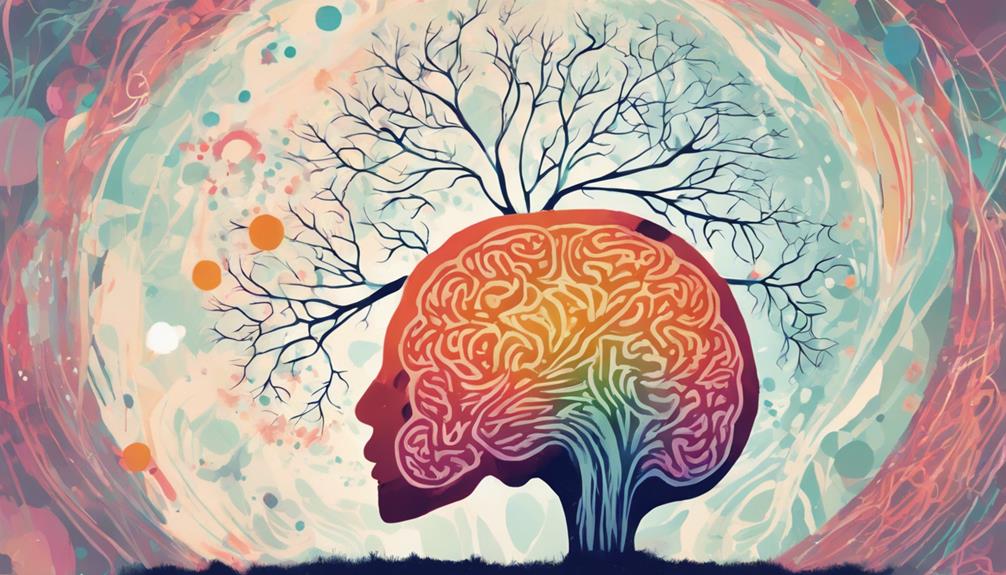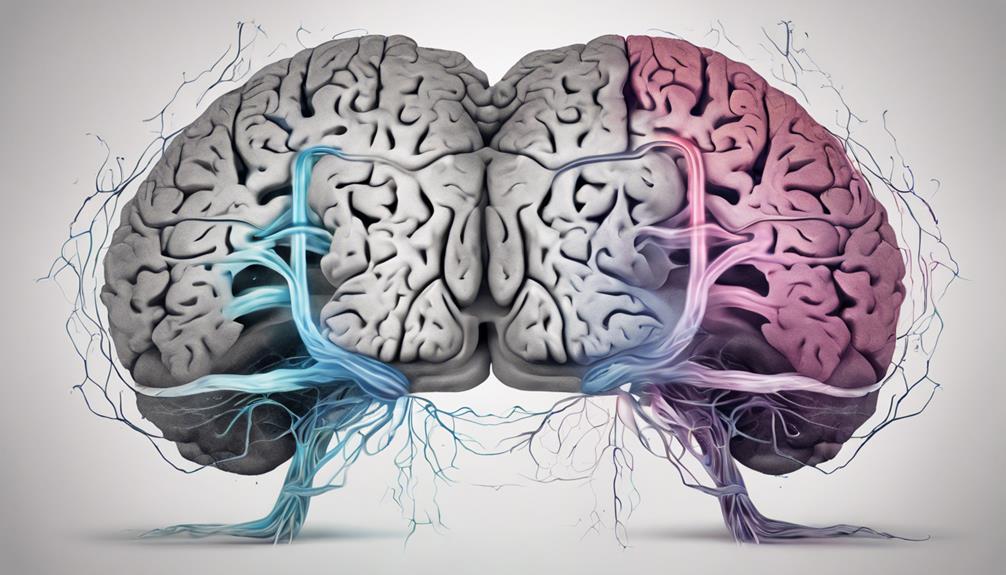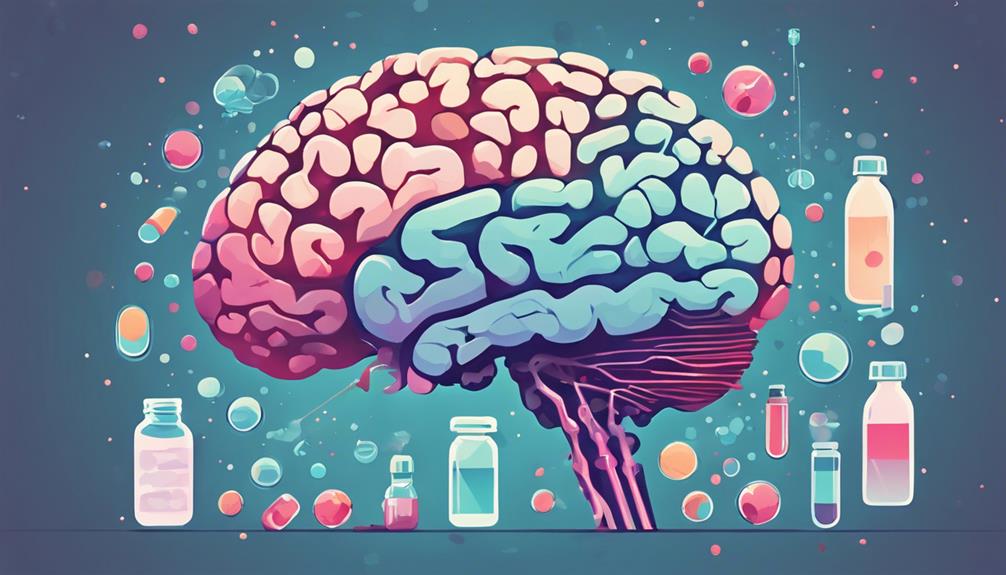Summary
- 1 Understanding BPD
- 2 Genetic influences
- 3 Brain structure
- 4 Neurochemical factors
- 5 Childhood trauma
- 6 Family environment
- 7 Social Relations
- 8 Cultural impact
- 9 Early Warning Signs
- 10 Diagnostic criteria
- 11 Therapeutic Approaches
- 12 Benefits of therapy
- 13 Medication Options
- 14 Personal Stories
- 15 Frequently asked questions
- 15.1 How does diet affect the development of borderline personality disorder (BPD)?
- 15.2 Can exercise help manage the symptoms of borderline personality disorder?
- 15.3 Is there a difference in the prevalence of borderline personality disorder between urban and rural populations?
- 15.4 How do hormonal changes affect the symptoms of borderline personality disorder?
- 15.5 Can alternative therapies such as acupuncture help in the treatment of borderline personality disorder?
Borderline Personality Disorder (BPD) is not just about birth or education, but is a combination of both. Genetics plays a role, which means it can be inherited. But childhood trauma and unstable family environments are also important factors. Also the structure and chemicals of the brain can contribute, causing those intense emotions and impulsive actions. Treatments such as therapy and medication can help manage the symptoms. Although it is complicated, understanding these factors is the first step to getting the full picture. Continue to learn more about how BPD develops and what can help manage it.
Understanding BPD

Borderline Personality Disorder (BPD) is a mental health condition that affects how you think and feel about yourself and others. You may experience intense emotions, have difficulty with self-image and struggle to maintain stable relationships. It's like riding an emotional roller coaster where moments of happiness and sadness come unexpectedly. You may feel empty or fear abandonment, leading you to take actions that may seem impulsive or even harmful.
Understanding BPD begins with recognizing its symptoms. You may go from a burst of happiness to a deep sense of devastation in a short time. Your relationships might be intense but unstable, oscillating between admiration and anger. At times, you might perform actions impulsively, such as compulsive shopping or risky behavior, which you later regret.
It is also common to have difficulty really knowing who you are. Your self-image may change frequently, making you uncertain about your goals or values. In addition, when you are stressed, you may also experience paranoia or feel disconnected from reality.
Living with BPD can be challenging, but knowing what it is and how it manifests is the first step in managing it. With the right support and understanding, you can deal with it more effectively.
Genetic influences
Often, individuals wonder if Borderline Personality Disorder (DBP) has a genetic component, wondering if it is something one is born with. You may be interested to know that research suggests that indeed genes may play a role. Studies have shown that DBP tends to run in families, meaning that if a parent or sibling has DBP, you have a higher chance of developing it too.
Now, let us delve into how significant this genetic influence is. Twin studies have been particularly enlightening. Identical twins, who share 100% of their genes, are more likely to both have DBP than fraternal twins, who share about 50% of their genes. This difference suggests that genes are not the only factor, but they do matter.
However, genes are only part of the story. They can make you more susceptible to DBP development, but they don't guarantee it. Think of it like having a seed. Whether that seed grows depends on soil, water and sunlight. So while your genetic constitution can lay the foundation, other factors such as upbringing, environment and life experiences play crucial roles.
Understanding these genetic influences can help you see the full picture of the complexities of DBP.
Brain structure

When exploring the brain structure of individuals with Borderline Personality Disorder (BPD), some intriguing differences are found compared to those without the condition. These differences may help explain why people with BPD experience intense emotions and struggle with impulse control. Here are four key areas where the brain structure of a person with BPD might differ:
- Amygdala: This part of the brain helps regulate emotions such as fear and pleasure. In people with BPD, the amygdala is often more active, which means emotions can be much more intense and difficult to manage.
- Hippocampus: This area is involved in forming new memories and linking emotions to those memories. The hippocampus may be smaller in people with BPD, possibly contributing to difficulties in emotional and memory regulation.
- Prefrontal Cortex: This region helps in decision making and impulse control. In BPD, the prefrontal cortex may be less active, making it more difficult for individuals to control impulsive behaviors and thoughts.
- Anterior Cingulate Bark: This part of the brain is related to mood regulation and error detection. Abnormalities here can lead to the heightened emotional sensitivity observed in BPD.
Understanding these structural differences can help in the development of better treatments and support systems for those with BPD.
Neurochemical factors
While brain structure plays a significant role in Borderline Personality Disorder, the chemicals in your brain are also key players in how emotions and impulses are managed. Neurotransmitters such as serotonin, dopamine and norepinephrine are essential for mood regulation. In people with DBP, these chemicals often do not function as they should, leading to mood swings, impulsivity, and emotional instability.
Serotonin is known for its role in regulating mood and feelings of well-being. When serotonin levels are not balanced, you may experience mood swings or intense emotional reactions. Dopamine, on the other hand, is associated with pleasure and reward. Imbalances in dopamine can lead to impulsive behavior and difficulty controlling emotions. Finally, norepinephrine affects how you respond to stress. If this chemical is out of balance, your reactions to stress can be more intense and more difficult to manage.
Understanding these neurochemical factors can help you understand why DBP is not just about 'bad behaviors' or 'overreactions.' It is about a complex web of brain chemistry that affects how you feel and act. Knowing this can be a step toward greater empathy and more effective treatment options.
Childhood trauma

Childhood trauma can play a significant role in the development of Borderline Personality Disorder (BPD). When traumatic events are experienced during the formative years, it can profoundly affect emotional and psychological well-being. The link between childhood trauma and BPD is widely documented, suggesting that early adverse experiences may contribute to the disorder.
Here are some ways in which childhood trauma might influence the development of BPD:
- Emotional Neglect: If you were neglected emotionally as a child, you may have difficulty forming healthy relationships and regulating your emotions as an adult.
- Physical or Sexual Abuse: Experiencing physical or sexual abuse can lead to feelings of intense shame, guilt and fear, common in those with BPD.
- Loss or Separation of Parents: Losing a parent or experiencing prolonged separation can create a sense of abandonment, a central issue in BPD.
- Witnessing Domestic Violence: Growing up in an environment where domestic violence occurs can make you more prone to develop emotional instability and difficulty trusting others.
Understanding these connections helps you see how deeply childhood experiences can shape mental health as an adult. It is critical to recognize these factors in order to seek appropriate support and therapies.
Family environment
In a family environment marked by instability or conflict, you may find it difficult to develop a secure sense of self, which is essential for emotional health. If your family experiences frequent arguments, unpredictable behavior or emotional neglect, it can create a sense of insecurity and confusion. This lack of stability can make it difficult to understand and manage emotions effectively.
When parents or guardians are inconsistent in their behavior or emotional availability, it can lead to feelings of abandonment or fear. You may constantly worry about being loved or valued, which can lead to intense emotional reactions. In addition, if the family environment involves any form of abuse, whether emotional, physical, or verbal, it can greatly affect theself-esteem And on overall mental health.
Children growing up in such environments may develop unhealthy defense mechanisms. You may struggle with trust issues, fear of abandonment, and difficulty maintaining relationships. These experiences may contribute to the development of traits associated with borderline personality disorder (BPD). Understanding the impact of your family environment can help you recognize the need for support and therapy to address these deeply rooted issues and foster healthier emotional patterns.
Social Relations

You might wonder how early friendships and peer interactions shape a person with borderline personality. Early bonds and social connections influence emotional development. Peer influence often plays an essential role in sustaining or complicating these relationships.
Impact of Early Bonds
Strong early bonds with caregivers can greatly influence the development of borderline personality disorder. As you grow up, the relationships you form with caregivers shape the way you see yourself and see the world. If these bonds are positive and stable, you are more likely to develop a healthy sense of self. However, if they are unstable or harmful, they can lead to difficulties in emotional regulation and identity, which are key features of borderline personality disorder (BPD).
Here are four ways in which early connections can affect you:
- Attachment Style: Secure attachment with caregivers can help you feel safe and understood, reducing the risk of BPD. Unstable attachment can lead to fear of abandonment and problems with trust.
- Emotional Support: Constant emotional support from caregivers helps you learn how to deal with your feelings. Lack of support can make it difficult for you to cope with stress and emotions.
- Behavior Model: How caregivers manage their emotions and relationships teaches you what to expect from others and yourself.
- Validation: Feeling validated by caregivers helps you develop confidence and self-esteem. Without it, you may have difficulty with self-esteem and identity.
Understanding these early connections can provide insight into the origins of BPD and underscore the importance of consistent loving care.
Peer influence dynamics
Often, the friendships formed during the adolescent years can greatly shape emotional and social development, affecting the likelihood of developing borderline personality disorder. During these formative years, you are figuring out who you are and how you relate to others. Your friends may support healthy emotional habits or contribute to more problematic behaviors.
Imagine your adolescent friends as mirrors. They reflect your behaviors, moods and attitudes. If you are surrounded by understanding and supportive friends, you are likely to develop greater self-awareness and better coping mechanisms. However, if your social circle is unstable or even toxic, it can intensify feelings of rejection, abandonment and emotional volatility.
Peer pressure also plays a significant role. You may feel compelled to conform, even if it results in risky or harmful behavior. This can lead to an unstable sense of self, a hallmark of borderline personality disorder. It is important to recognize that while your peers may influence you, they are not the only factor. Other aspects, such as family environment and genetics, also contribute. Understanding the dynamics of your friendships can help you make better choices for your emotional well-being.
Cultural impact
In different cultures, the understanding and expression of borderline personality traits can vary greatly. What might be considered a sign of borderline personality disorder (BPD) in one culture might be interpreted differently in another. Cultural norms, values and expectations play a significant role in shaping how these traits are viewed and managed. Here are some key points to consider:
- Expression of Emotions: In some cultures, openly expressing intense emotions is acceptable, while in others it might be seen as a lack of self-control. This may influence how BPD symptoms are perceived and dealt with.
- Family Dynamics: The role of family varies widely. In collectivist cultures, family support could mask or mitigate symptoms, while in individualist cultures, the lack of a strong family network could exacerbate symptoms.
- Stigma and Beliefs about Mental Health.: Attitudes toward mental health influence whether individuals seek help. In some cultures, mental health problems carry significant stigma, which discourages people from seeking treatment.
- Access to Resources: Not all cultures have equal access to mental health care. Limited resources can delay diagnosis and treatment, affecting the course of the disorder.
Understanding these cultural influences helps create more effective and culturally sensitive approaches to diagnosing and treating BPD.
Early Warning Signs

While cultural factors shape the experience of borderline personality disorder (BPD), recognizing early signs can help you seek early support and intervention. If you notice sudden intense mood changes that seem more extreme than normal could be a sign. Feelings of emptiness, worthlessness or intense fear of abandonment are also common. You may see someone struggling with unstable relationships, moving quickly from idealizing someone to depreciating them.
Another warning sign is the impulsive behavior, such as reckless driving, spending sprees or substance abuse. This need for instant gratification Can lead to dangerous situations. Pay attention if someone shows self-defeating behaviors like cutting or burning themselves, or if they talk about suicide. Their emotions might seem like a roller coaster, with intense episodes of anger, anxiety, or depression.
Watch out for someone who has a unstable sense of identity. They may frequently change their self-image, their goals or even their values. This instability can make them feel that they do not know who they are. Recognizing these early signs can make a significant difference. If you notice any of these behaviors, it is essential to encourage them to look for professional help.
Diagnostic criteria
When trying to understand borderline personality disorder, it is important to know the main symptoms and how they are diagnosed. You will find that the process involves the analysis of key behavioral indicators and the following of specific steps to make an accurate diagnosis. Let's look at these criteria together so that you can understand what professionals are looking for.
Overview of the Main Symptoms
To understand Borderline Personality Disorder (DBP), it is necessary to know its main symptoms, which are outlined in the diagnostic criteria. These symptoms help professionals identify DBP and guide them in providing appropriate treatment. Let's look at the main symptoms in detail so you can get a clear picture:
- Emotional Instability: People with DBP often experience intense emotions that can change rapidly. They may feel extremely happy one moment and deeply sad or angry the next.
- Impulsive Behaviors: This includes acting without thinking about the consequences, such as spending money recklessly, engaging in substance abuse or having unprotected sex.
- Unstable relationships: Those who suffer from DBP may have intense and volatile relationships. They may idealize someone one day and feel extreme anger or dislike toward that person the next.
- Distortion of Self Image: People with DBP often struggle with their own sense of identity. They may feel uncertain about who they are or what they want in life, leading to frequent changes in work, goals, or values.
Understanding these core symptoms can help you recognize the challenges faced by those with DBP. Knowing the diagnostic criteria is the first step in understanding what DBP entails and how it affects lives.
Steps in the diagnostic process
The diagnosis of Borderline Personality Disorder (DBP) requires a thorough evaluation using specific criteria outlined in the Diagnostic and Statistical Manual of Mental Disorders (DSM-5). You will need a mental health professional, such as a psychologist or psychiatrist, to guide you through this process. They will begin by asking you detailed questions about your symptoms, behaviors, and emotional patterns. It is important to be honest during this assessment to get a diagnosis thorough.
I DSM-5 criteria for DBP include nine key symptoms, but it is not necessary to have all of them for a diagnosis. Typically, if you present with five or more of them, you may be diagnosed with DBP. These symptoms cover areas such as. intense mood changes, unstable relationships, fear of abandonment and impulsive behaviors. The professional will also consider how long you have been experiencing these symptoms and how they affect your daily life.
In addition to the interview, the professional might use questionnaires or self-assessment tools to gain more in-depth perspectives. Remember, the goal is to understand your experiences in depth. This meticulous and detailed process ensures that the diagnosis is accurate, paving the way for treatment effective And to appropriate support.
Key behavioral indicators
Understanding the key behavioral indicators of Borderline Personality Disorder (BPD) helps you recognize the specific patterns and symptoms that define this condition. BPD can be complex, but knowing what to look for makes it easier to identify. Here are four key behavioral indicators you should be aware of:
- Emotional Instability: People with BPD often experience intense emotional swings. Their mood can change rapidly from happiness to sadness or anger, sometimes for no clear reason.
- Fear of Abandonment: A strong fear of being left alone or abandoned is common. This can lead to frantic efforts to avoid real or imagined separations, including severe attachment behavior or anxiety.
- Unstable relationships: Relationships with others can be intense and chaotic. People with BPD may idealize someone one moment and then suddenly feel that person has disappointed or betrayed them.
- Impulsive Behaviors: Engaging in risky or self-destructive activities, such as reckless driving, substance abuse, or binge eating, is another characteristic. These behaviors are often a way of coping with emotional pain.
Therapeutic Approaches

In the treatment of borderline personality disorder, a combination of therapy, medication and support can make a significant difference. Therapy is often the foundation, with approaches such as Dialectical Behavioral Therapy (DBT) and Cognitive Behavioral Therapy (CBT) particularly effective. DBT helps you manage emotions and improve relationships, while CBT focuses on changing negative thought patterns.
Medications can also play a role, even if they do not cure BPD. Antidepressants, mood stabilizers and antipsychotic drugs can help relieve some symptoms, making other treatments more effective. However, the decision to use medications should always be made with a health care provider.
Support systems are equally essential. This includes friends, family and support groups that can offer emotional support and understanding. They can help you feel less isolated and more motivated to pursue treatment.
| Treatment | Purpose |
|---|---|
| Therapy (DBT, CBT) | Managing emotions, changing negative thinking patterns |
| Drugs | Relieve symptoms to improve the effectiveness of therapy |
| Support Systems | Providing emotional support and motivation |
| Self-care | Promoting a healthy lifestyle and stress management |
Don't forget self-care. Regular exercise, a balanced diet, and adequate sleep can strengthen your overall well-being, making it easier to manage BPD. With the right combination, you can find a path to a healthier, more stable life.
Benefits of therapy
Therapy offers you the chance to understand your emotions and build healthier relationships. It is a powerful tool that can help you navigate the complexities of Borderline Personality Disorder (DBP). By working with a therapist, you can discover the root causes of your emotional struggles and learn effective strategies for managing them.
Here are some key benefits of the therapy:
- Emotional Regulation: Therapy can teach you how to identify and manage intense emotions. This can help you respond to situations more calmly and rationally.
- Improving Relationships: Through therapy, you can learn communication skills that foster healthier interactions with friends, family and partners.
- Coping Strategies: A therapist can provide techniques for coping with the stress, anxiety, and other challenging feelings that often accompany DBP.
- Self-awareness: Therapy encourages self-reflection, helping you understand your triggers and patterns. This awareness can lead to more informed choices and actions.
Engaging in therapy could be a transformative step toward a more balanced and fulfilling life. It's about providing you with the tools to thrive, not just survive. Remember, asking for help is a sign of strength, and taking that first step can make all the difference.
Medication Options

When managing the Borderline Personality Disorder, you might ask yourself what are the drug options available. We will review common prescriptions, their potential side effects, and some alternative treatments. Understanding these can help you make informed choices about your treatment.
Common prescribed drugs
Many people with Borderline Personality Disorder (DBP) find relief through common prescribed medications targeted to their specific symptoms. Although medications are not a cure for DBP, they can help manage symptoms such as mood swings, anxiety and depression. Here are some common types of medications that might be prescribed:
- Antidepressants: These can help with symptoms of depression and anxiety, which are often experienced by those with DBP. Selective serotonin reuptake inhibitors (SSRIs) are a common choice.
- Mood stabilizers: Medications such as lithium or anticonvulsants can help balance mood swings and reduce impulsivity. They are often used to manage emotional highs and lows.
- Antipsychotics: For those who experience severe symptoms, such as intense mood swings or distorted thinking, antipsychotics can be effective. Atypical antipsychotics, such as quetiapine, are commonly prescribed.
- Anti-anxiety drugs: Benzodiazepines or other anti-anxiety medications can help reduce anxiety and agitation. They are usually prescribed for short-term use because of potential addiction problems.
Potential side effects
It is important to be aware of potential side effects when taking medications for Borderline Personality Disorder. While these medications can help you manage your symptoms, they can also cause some side effects. Understanding these effects can help you make informed decisions and prepare you for any changes you may experience.
Here is a quick look at some common medications and their potential side effects:
| Type of Drug | Potential Side Effects |
|---|---|
| Antidepressants | Nausea, weight gain, insomnia |
| Mood stabilizers | Dizziness, fatigue, rash |
| Antipsychotics | Drowsiness, blurred vision |
| Anti-anxiety drugs | Drowsiness, risk of addiction |
| Beta-blockers | Cold hands, tiredness |
For example, antidepressants such as SSRIs can be very effective but may cause nausea or weight gain. Mood stabilizers are another option but may cause dizziness or fatigue. Antipsychotics, often used to control severe symptoms, may cause drowsiness or blurred vision. Anti-anxiety medications can help with intense anxiety but can also make you feel very sleepy and have a risk of addiction. Beta-blockers, sometimes prescribed for anxiety, may make your hands feel cold and make you feel unusually tired.
Being aware of these side effects can help you and your doctor choose the best treatment plan to manage your symptoms. Always communicate any side effects you experience to your health care provider.
Alternative treatment options
While medication is a common way to manage Borderline Personality Disorder, there are also alternative treatment options that can be just as effective. If you're looking for different approaches, these methods can supplement or even replace traditional medications.
- Dialectical Behavior Therapy (DBT): This is one of the most popular therapies for BPD. It helps you learn to manage emotions, reduce self-injurious behaviors, and improve relationships. DBT combines cognitive-behavioral techniques with mindfulness practices.
- Cognitive Behavioral Therapy (CBT): CBT focuses on changing negative thought patterns that can lead to harmful behaviors. By recognizing and changing these thoughts, you can develop healthier coping mechanisms.
- Mindfulness and Meditation: Mindfulness practices can help you stay grounded in the present moment, reducing emotional highs and lows and impulsive actions. Meditation techniques can also foster a sense of inner peace and stability.
- Support Groups: Connecting with other people who understand what you are going through can be incredibly healing. Support groups offer a safe space to share experiences, gain perspectives and build a sense of community.
Exploring these options can provide you with a holistic approach to managing BPD, offering both emotional relief and practical skills.
Personal Stories
Listening to the personal stories of those with borderline personality disorder can offer profound insights into their daily struggles and triumphs. When you hear someone describe their feelings of intense emotional pain, sudden mood swings, and fear of abandonment, it becomes clear how difficult borderline personality disorder can be. These stories are not just tales; they are real-life experiences that can help you understand what it is like to live with this condition.
Imagine feeling like you are on an emotional roller coaster, where your thoughts and feelings change rapidly. One minute you might feel elated and the next minute you might plummet into despair. These changes can make relationships difficult, as your loved ones may not understand why you react so intensely. Personal stories often highlight the importance of support systems and understanding from friends and family.
Frequently asked questions
How does diet affect the development of borderline personality disorder (BPD)?
Diet can affect mental health, but it is not a direct cause of borderline personality disorder (BPD). A poor diet may worsen symptoms such as mood swings and irritability, while a balanced diet with nutrients such as omega-3s and vitamins can help stabilize mood. Thus, eating well will not cure BPD, but it can support overall well-being and make it easier to manage the disorder.
Can exercise help manage the symptoms of borderline personality disorder?
Yes, exercise can help manage BPD symptoms. Physical activity releases endorphins, which can improve your mood and reduce stress. It also provides a healthy way to manage emotions and can improve sleep patterns. Regular exercise can help you build a routine, increasing your sense of stability. So, doing activity could be a simple but effective way to support your mental health along with other treatments.
Is there a difference in the prevalence of borderline personality disorder between urban and rural populations?
Yes, there is a difference in the prevalence of borderline personality disorder (BPD) between urban and rural populations. Urban areas often have higher rates of BPD. This could be due to increased stressors such as overcrowding, noise, and higher living costs in cities. Rural areas may have lower rates, but they also have less access to mental health services, which may affect diagnosis rates. Thus, where one lives may influence both the prevalence and recognition of BPD.
How do hormonal changes affect the symptoms of borderline personality disorder?
Hormonal changes can really affect the symptoms of the borderline personality disorder (BPD). You may notice that mood swings get worse at certain times, such as during puberty, the menstrual cycle, pregnancy or menopause. These periods of hormonal fluctuations can make emotions more intense and difficult to manage. It is important to pay attention to these patterns to better understand your triggers and work with your health care provider to find strategies to help you.
Can alternative therapies such as acupuncture help in the treatment of borderline personality disorder?
You may wonder if alternative therapies such as acupuncture can help in the treatment of BPD. Although they do not replace traditional methods such as therapy and medication, some people find relief through acupuncture. It can reduce stress and promote relaxation, which may relieve some BPD symptoms. It is important to discuss any alternative treatments with your doctor to make sure they are safe and beneficial for your specific needs.
